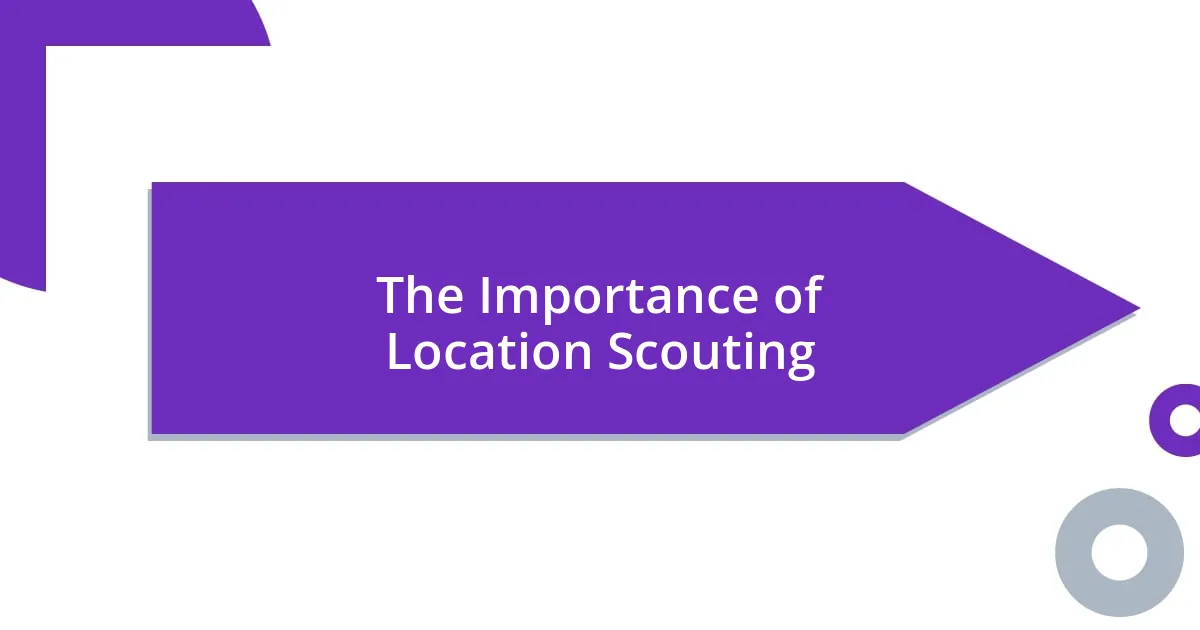Key takeaways:
- Street photography captures fleeting, candid moments that tell unique stories, emphasizing the importance of “the decisive moment.”
- Effective techniques for candid photography include blending in, using a discreet camera, and focusing on eye-level shots to encourage authentic interactions.
- Composition techniques like leading lines, the rule of thirds, and negative space can enhance emotional depth in photographs.
- Location scouting is crucial for discovering vibrant scenes that enrich storytelling and create unforeseen photographic opportunities.

Understanding Street Photography Concepts
Street photography is more than just snapping pictures; it’s about capturing the essence of life in its most candid moments. I remember a workshop where we were encouraged to get lost in a busy market to find those fleeting interactions. Have you ever noticed how a simple smile can tell an entire story? That’s the beauty of street photography—every frame holds a narrative waiting to be unveiled.
One fundamental concept is the idea of “the decisive moment,” popularized by Henri Cartier-Bresson. This refers to that split second when everything comes together perfectly in a shot. I recall standing at a crosswalk, watching people rush by, when suddenly two strangers collided and shared a laugh. That moment, if captured, would have perfectly illustrated the unpredictability of urban life. It makes me wonder: how often do we miss these moments because we’re not actively looking?
Light and composition are equally essential to street photography. I’ve learned that the interplay of shadows and highlights can significantly alter the mood of an image. During one session, a warm sunset splashed colors across the frame, transforming a mundane street scene into something magical. Don’t you think it’s fascinating how something as simple as lighting can evoke different emotions in a photograph?

Techniques for Capturing Candid Moments
One of the techniques that has truly transformed my approach to candid photography is blending in with my surroundings. I’ve found that when I’m less conspicuous, people are more at ease, allowing genuine interactions to unfold. I recall a quiet afternoon at a park where I casually sat on a bench, just observing. I noticed a child playing with their dog—a simple moment, but their uninhibited joy was infectious. When I finally raised my camera, the pure delight on their faces was captured beautifully.
Here are some effective techniques for capturing candid moments:
- Use a small, discreet camera: This reduces attention and encourages natural behavior.
- Focus on eye-level shots: Getting down to a child’s or pet’s level can reveal unexpected perspectives.
- Anticipate moments: Pay attention to the flow of people and interactions to catch the decisive moment.
- Practice patience: Sometimes, just waiting quietly in one spot can yield the most authentic interactions.
- Shoot in burst mode: Capturing several frames in quick succession increases the chances of getting that perfect candid shot.
Emphasizing these techniques has not only improved my street photography skills but has deepened my appreciation for the unscripted stories around me.

Mastering Composition in Street Photography
Mastering composition in street photography is truly an art form that I’ve come to appreciate through workshops. I once participated in an exercise where we had to frame a shot using leading lines—like sidewalk edges or streets—drawing the viewer’s eye to the subject. I distinctly remember capturing a young couple walking hand-in-hand, with the cobblestones creating natural lines that led right to them. It struck me how composition could not only enhance a photograph but also emphasize the emotions within it.
I’ve also learned the power of the rule of thirds. This guideline suggests dividing the frame into nine equal sections and placing key elements along the lines or intersections. During one memorable workshop, I experimented with this technique while photographing a street musician. Positioning him slightly off-center, with a crowd around him filling the other spaces, created a dynamic balance that drew me back to the image time and again. It’s fascinating how simple adjustments can change the entire narrative of a photo, don’t you think?
Moreover, negative space can dramatically impact my work. By allowing empty areas around my focal point, I can evoke feelings of loneliness or isolation. I distinctly recall capturing an elderly man sitting alone on a bench in an otherwise bustling plaza. The emptiness surrounding him told a deeper story, reflecting the contrasts of connection and solitude. It reminded me how careful consideration of composition can allow the viewer to engage emotionally with the scene.
| Composition Technique | Description |
|---|---|
| Leading Lines | Utilize natural lines in the environment to guide the viewer’s eye to the subject. |
| Rule of Thirds | Divide the frame into nine equal parts, placing elements along the lines or intersections to create balance. |
| Negative Space | Incorporate empty space around the subject to evoke emotions like loneliness or isolation. |

The Importance of Location Scouting
When I first dove into street photography, location scouting felt like an afterthought. But I’ve realized its significance is immense. During a workshop in a vibrant urban neighborhood, I spent the morning wandering alleys and plazas, feeling the pulse of the street. The right location not only dictates the mood of my shots but also offers an array of stories waiting to be captured. Have you ever walked into a place and felt an uncanny energy? That’s what locating the perfect spot did for me—it became the backdrop for great captures.
The beauty of location scouting is in its unpredictability. I remember a particular day at the seaside, where I stumbled upon a group of fishermen mending their nets. The colors of their boats against the azure water were mesmerizing. I hadn’t planned to shoot there, but the scene called to me. Sometimes, it’s the unplanned moments that yield the most extraordinary photographs. Have you ever stepped into a space that felt alive? For me, these moments are where I find the essence of street photography.
I’ve also learned that familiarizing myself with various locations builds a sense of anticipation for what I might discover next. It’s as if each corner of a city whispers its own narrative. I once revisited a small square where I had previously captured a street performer, only to find a parade of children carrying colorful kites the second time around. Each visit deepens my connection to the place and its people, transforming mere locations into subjects of contemplation. Isn’t it thrilling how location can change not just the image but the entire story behind it?

Sharing and Showcasing Your Work
Sharing my work after a street photography workshop has been both exhilarating and nerve-wracking. I remember the first time I posted my photos online; I hesitated, worrying about how others would perceive my captures. But to my surprise, the feedback was overwhelmingly positive. Engaging with others through social media platforms not only validated my experiences but also opened the door to constructive critiques that helped refine my craft. Have you ever felt that thrill with every like or comment on your work? It’s a powerful motivator.
In showcasing my photographs, I discovered the impact of storytelling. Each image tells a story, and I’ve learned to craft captions that invite viewers into the moment. During one workshop, I captured a lively street market; I shared it with a caption that painted the sounds, smells, and hustle of that day. By weaving a narrative around the photo, I found that my audience connected more deeply with the scene. It’s incredible how a well-placed word can enrich a visual experience, don’t you think?
I’ve also explored the benefits of participating in group exhibitions. Displaying my work alongside fellow photographers has created a sense of community and collaboration. I remember feeling a rush of pride when my piece was featured in a local gallery. The conversations sparked by others’ interpretations of my work were enlightening, revealing perspectives I hadn’t considered. Sharing a space with others who share your passion for street photography fosters a sense of belonging—there’s something truly special about that collective energy.












